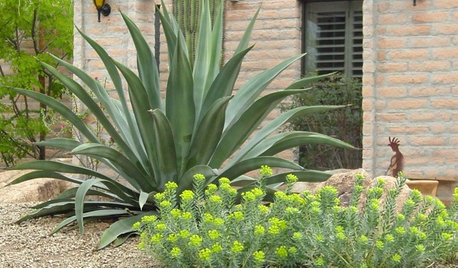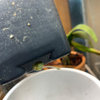Rose Rootstocks and characteristics
cuttingcollector
13 years ago
Featured Answer
Sort by:Oldest
Comments (10)
taoseeker
13 years agotaoseeker
13 years agoRelated Discussions
Grafting a normal rose on RRV resistant species rose rootstock.
Comments (1)There are comments on the Rose Hybridizers Web page http://www.rosebreeders.org/forum/viewtopic.php?f=2&t=55182...See MorePlease Help Identify Rootstock Rose?
Comments (7)HI Paul. I just looked up Bonica, but I think my roses are paler. It sets small hips toward fall. Look like little berries. Not a lot, but a few. I wonder if I'm assuming it's rootstock (very probably), but it could have been a seedling? No. Even as I write that, I feel certain it was old rootstock coming out to play as French Lace died....See MoreHortico Roses Rootstock?
Comments (8)I have ordered a number of roses over the years from Hortico, including Augusta Luise. I've always been pleased with their plants, and haven't noticed a big difference in the size of Hortico plants and those that I've ordered from Palatine. I don't think the Augusta Luise from Palatine (they are calling it Augusta Louise) is quite the same as the "real" AL. I've noticed a difference in color and petal count in the AL from Palatine compared to Hortico's AL, which seems more like the original Tantau plant (also called Augusta Luise (trademarked) on Tantau's site. Diane...See MorePicking a rose for rootstock
Comments (2)The stocks in use in various areas are sometimes those which have proven themselves the easiest to root and the easiest to bud to in those areas. Prior to Dr, Huey being "the" stock in California production, Ragged Robin, Gloire des Rosomanes was the stock of choice there. It's thought some time around WWII, while collecting cuttings for the next year's production, cuttings of Huey were collected, rooted and budded to. Once it was discovered how much better those plants performed, the choice was made to switch to Huey for production. Sometimes, it's scientific study, sometimes it's serendipity. Yes, patents mean you aren't supposed to propagate the patented rose. If you decide you wish to attempt rooting it and testing it as a stock for your garden, that choice is yours to make and I am not going to judge either way. You will need to successfully root lengths of it. You will need to remove all but the top one or two buds from each cutting so no growth of new shoots comes from anywhere but the top growth buds, or those new shoots will be "suckers" you will have to deal with on your newly budded plants. Once they are rooted, you can decide whether you wish to "T" bud, chip bud, cleft graft or how else you wish to bud to them. Personally, I prefer chip budding as it is far less dependent upon the bark of the stock being able to be lifted easily, so budding can be successfully accomplished over a much longer period than it otherwise might be able to. There are many videos on line about how to accomplish each method of budding (or grafting, it's pretty much the same thing, except you bud or graft single buds, but you can also graft stems to stocks).If you wish photos of chip budding, I have some on my blog. The hardest part of what you propose is rooting the stocks. Practice it until you're proficient then have a ball budding! Good luck!...See Morecuttingcollector
13 years agotaoseeker
13 years agocuttingcollector
13 years agodannypritchett01
13 years agocuttingcollector
13 years agobarry jaggers
8 years agocountrygirlsc, Upstate SC
8 years ago
Related Stories

WINTER GARDENINGPruning Secrets for Exquisite Roses
Encourage gorgeous blooms year after year with this time-tested advice on how to prune your rosebush in winter for health and shape
Full Story
GARDENING GUIDESWhat Kind of Roses Should You Grow?
Want to add the beauty of roses to your garden? Find out which ones, from old-fashioned to modern, are right for you
Full Story
GARDENING GUIDESGreat Design Plant: Rosa Banksiae a Low-Maintenance Beauty
This thornless, disease- and insect-resistant rose brings showers of white or yellow flowers to the spring garden
Full Story
GARDENING GUIDESHow to Spot a Drought-Tolerant Plant
Label? Who needs a label? Learn the characteristics of plants that can thrive in hot, dry conditions to help you pick the right ones
Full Story
RUGSKilim, Flokati, Beni Ourain, Boucherouite: What’s the Difference?
Get the global story you want for your floors by learning the origins and characteristics of rugs from around the world
Full Story
COLOROn Trend: Painterly Florals
Everything's coming up roses in home décor as flower patterns make a comeback
Full Story
GARDENING AND LANDSCAPINGLay of the Landscape: Mediterranean Garden Style
Earthy, lush and warmly welcoming, a Mediterranean garden can thrive in any warm-climate landscape with a few adaptations
Full Story
REMODELING GUIDESYour Floors: Zebra, Tiger, and Teak Wood, Oh, My!
Get the Pros and Cons of Exotic Woods: Hickory, Cherry, Rosewood and More
Full Story
EDIBLE GARDENSWhy Grow Quince? For Beauty, Fragrance and Old-Time Flavor
Delightfully perfumed fruit and lovely spring blossoms make this apple and pear cousin worth a spot in the garden
Full Story
GREEN BUILDINGOff the Grid: Siting and Building to Conserve Energy
Look to low-tech solutions for big energy savings when you’re constructing a home
Full StoryMore Discussions




lookin4you2xist